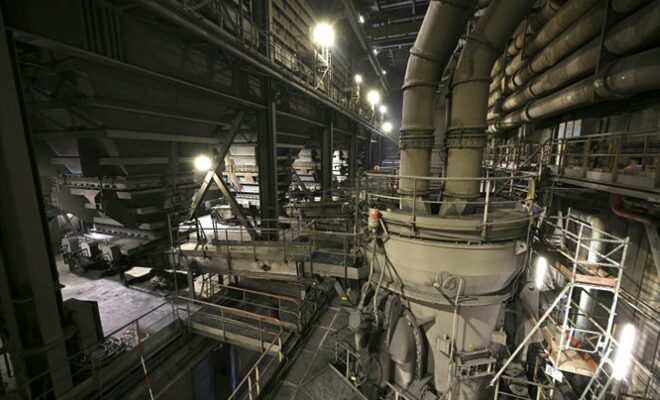The difficulties of the nuclear fleet, which provides on average 70% of the current to the French, required the use of more gas (+54.4%) to supply the power stations. (AFP/Archives/FREDERICK FLORIN)
From households to manufacturers, the French curbed their gas consumption in 2022 in response to soaring prices and thanks to a milder winter, but the year will also remain the one in which France had never burned so much gas to produce electricity.
The surge in gas prices in the wake of the war in Ukraine, the calls for sobriety that followed, and an exceptionally mild climate not conducive to heating: everything converged to bring down gas consumption in the country, and in a “Very significant”, indicated Thierry Trouvou, managing director of GRTgaz, the manager of the gas highways in France.
Compared to normal seasonal temperatures (in climate-corrected data), gas consumption by households, businesses (excluding large industrialists), in the tertiary sector fell by 6.2% in 2022 compared to 2021.
“Usually, we rather observe an annual drop of 1%, so it’s quite significant,” Thierry oublie told AFP.
“It is due to good citizenship but also to the fact of the very high prices that we have known”, also summarized the manager of GRTgaz on France info. But at this stage, “there is no study” which makes it possible to quantify “what falls under a sobriety chosen or suffered”, he specified to AFP.
The economic recovery in 2021 from the Covid pandemic had already driven gas prices higher, amid supply tensions that worsened after the start of the war in Ukraine and the gradual closure of Russian gas pipelines to the Europe.
In this context, France has become, thanks to its port terminals, a “major entry point for liquefied natural gas in Europe”, highly coveted by countries historically dependent on Russian gas, in particular Germany. In France, LNG entries have more than doubled in 2022, for consumption in the country or its European neighbours.
– Sustained or chosen sobriety –
The European Union has finally avoided shortages thanks to this diversification of gas supplies and calls for savings relayed in all countries, which has made it possible to fill stocks to a very high level before this winter and to preserve them long. The consumption of natural gas in the European Union thus fell by 20.1% in August-November compared to the average of the previous five years for this same period, more than its objective of 15%, according to Eurostat.
In France, the drop in gas consumption measured over the whole year reflects “a change in behavior among end consumers”, knowing that the government’s sobriety plan was only announced at the beginning of October.
In raw data, total gas consumption in France fell by 9.3%, to 430 TWh (compared to 474 in 2021), which leads to a drop in greenhouse gas emissions. But France could have done better in this area: the difficulties of the nuclear fleet, which provides on average 70% of the current to the French, required the use of more gas (+54.4%) to supply the power stations. In France, most gas is of fossil origin, although this is gradually changing with the rise of renewable gas.
“It’s historic, we have never used so much gas to produce electricity,” noted Mr. Found to AFP.
In detail, the decline, in raw data, was mainly driven by lower consumption among households and professionals of around – 16.6% and – 11.5% in large energy-intensive industries. The petrochemical (-19%), metallurgical (-19%) and automotive (-18%) industries are those that have reduced their consumption the most.
“There has been good sobriety, and another more problematic for the economy because companies have also had to slow down their production because of prices or leave to produce elsewhere”, underlined Thierry oublie.
© 2023 AFP
Did you like this article ? Share it with your friends with the buttons below.




